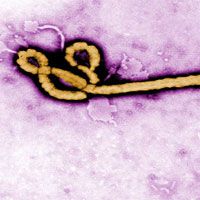Article
Ebola Genome Browser Unveiled for Vaccination Efforts
Author(s):
The same week that there was a confirmed case of the Ebola virus in the United States, a California university has joined the fight to battle the deadly outbreak.

The same week that there was a confirmed case of the Ebola virus in the United States, a California university has joined the fight to battle the deadly outbreak.
Researchers at the UC Santa Cruz Genomics Institute announced the development of an “Ebola genome browser,” which is designed to help develop a yet-to-be approved treatment for the virus. The program is under the direction of Jim Kent, a researcher at the school.
While there are many strains of the virus, a statement from the school said the browser “aligns five strains of Ebola with two strains of the related Marburg virus.” As a result the team “aligned 148 individual viral genomes, including 102 from the current West Africa outbreak.”
Kent said in the statement that his interest in Ebola first peaked during a microbiology class in 1997. “We need a heroic worldwide effort to contain Ebola,” he noted. ”Making an informatics resource like the genome browser for Ebola researchers is the least we could do.”
The development of the browser was a collaborative effort by many people, including Kent’s team, his sister who works at the CDC as an epidemiologist, and Phil Berman, a professor at the school who focuses on HIV.
“The incredible speed with which this group was able to assemble all the genetic information about Ebola and make it available to the world shows what a great team Jim Kent has assembled,” said
David Haussler, Kent’s supervisor at the school and a bioinformatics researcher.
This most recent breakthrough comes more than a decade after Kent and Haussler completed the first working draft of the human genome sequence on the Web. Shortly thereafter Kent developed the UCSC Genome Browser. The school also made a name for itself in research when it developed a SARS virus browser 11 years ago.





